The cathedral of Notre Dame in Paris is home to scores of priceless artifacts, artwork and relics collected over the centuries, each with their own story.
As a devastating fire tore through the revered Gothic cathedral on Monday, toppling its spire, many feared these treasures might be lost forever.
A “forest” of wooden latticework fueled the blaze which consumed the building’s roof, whose framework dates back to the 13th century, according to Msgr. Patrick Chauvet, the cathedral’s rector.
The Paris Fire Brigade tweeted that the cathedral’s stone construction has been “saved,” as have the “main works of art.” As more information emerges, what has been rescued from Notre Dame is becoming apparent.
Yet many details, such as possible water damage from the operation to save the building, are still unclear.
What was saved
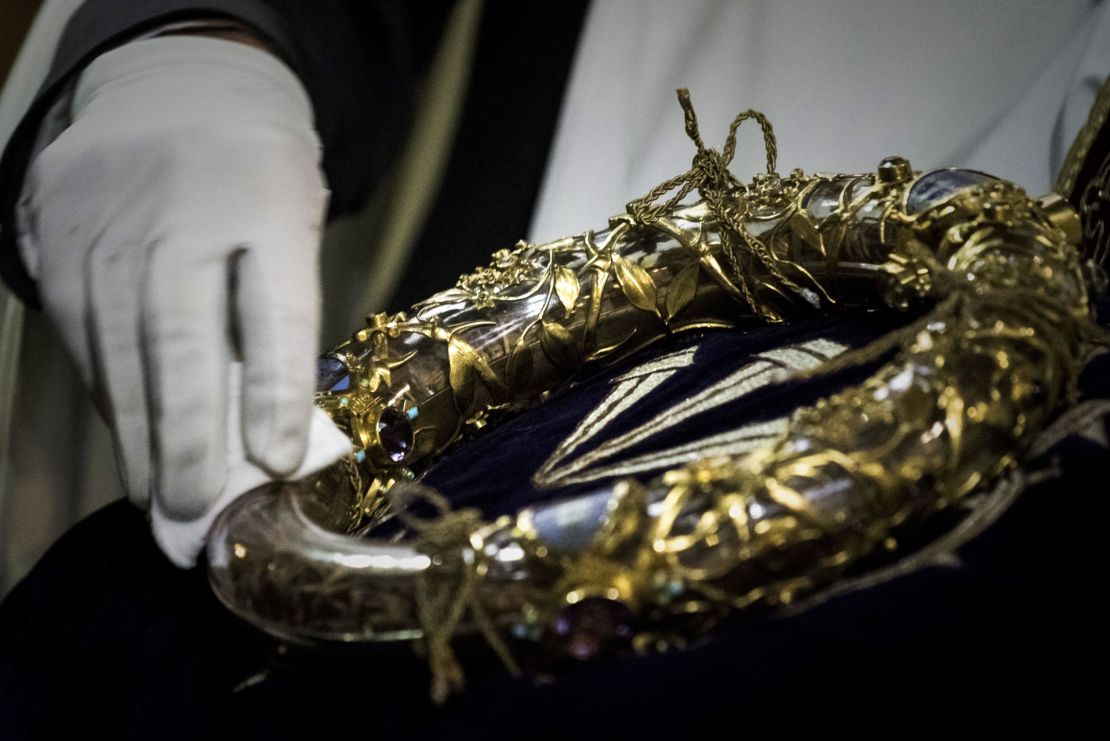
• The Crown of Thorns, which some believe was placed on the head of Christ and which the cathedral calls its “most precious and most venerated relic,” was rescued from the fire, Paris Mayor Anne Hidalgo said. Hidalgo confirmed the Tunic of Saint Louis and other major works were also saved. Both relics were were among items taken to Paris City Hall for safekeeping, Culture Minister Franck Riester said.
• A copper rooster that sat atop the spire which collapsed in Monday’s blaze has been recovered intact, according to the French Ambassador to the United States Gerard Araud. It “contains relics for the protection of Paris,” he said on Twitter.
• A number of artworks will be taken to the renowned Louvre art gallery inthe coming days, said Riester. Among them is a series of large paintings, known as the “Mays de Notre Dame,” the minister said. Early examinations of the paintings showed signs of smoke damage but no fire damage, according to Riester.
• Recovered artworks will be taken to storage facilities owned by the Louvre, where they will be dehumidified, protected, conserved and restored,Riester said.
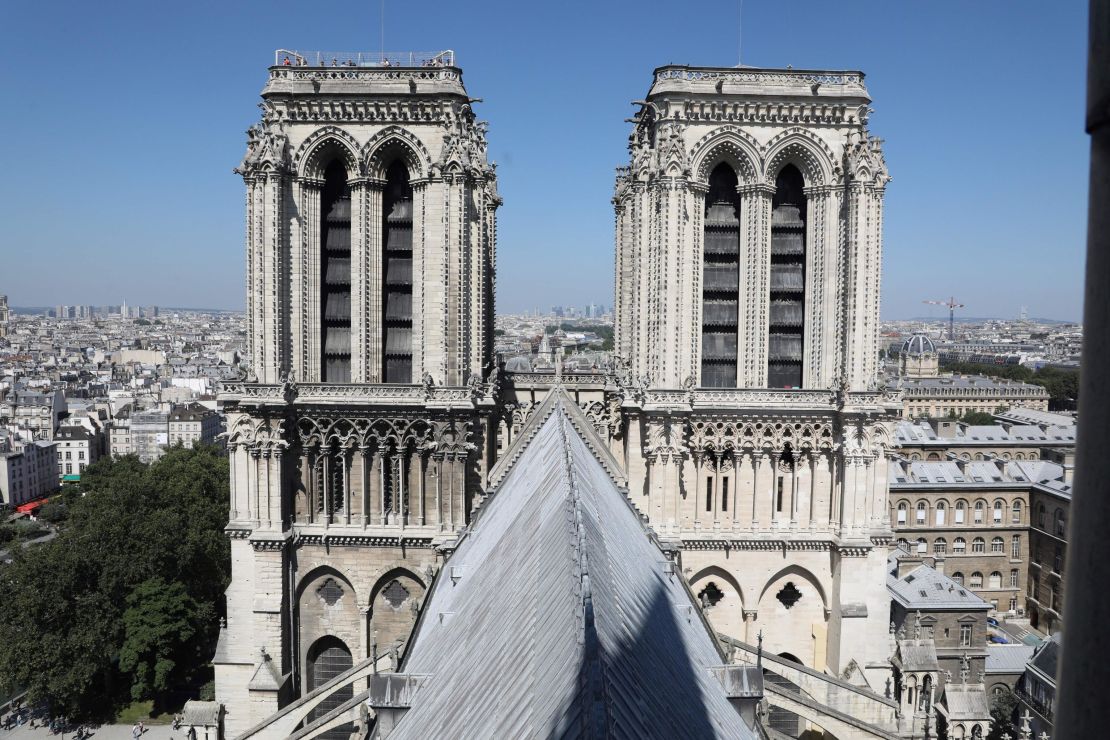
• The facade and twin bell towers, the tallest structures in Paris until the completion of the Eiffel Tower in the late 19th century, survived the blaze. The North tower was completed in 1240 and the South tower in 1250.
• The cathedral’s main bell, Emanuelle, lives in the South tower. It has marked significant moments in French history, such as the end of World War II, as well as holidays and special occasions. It is not known whether any damage was sustained to it.

• The Rose windows are a trio of immense round stained-glass windows over the cathedral’s three main portals that date back to the 13th century. All three appear to have been saved. Culture Minister Franck Riester said that the three windows do not appear to have suffered catastrophic damage.
• The original Great Organ, one of the world’s most famous musical instruments, dates back to medieval times. Over the years, organ makers renovated the instrument and added onto it, but it still contained pipes from the Middle Ages before Monday’s fire. The position of titular organist, or head organist, carries great prestige in France and around the world. The Archbishop of Paris confirmed the organ is safe, CNN affiliate BFM TV reported.
Fate of other artifacts unconfirmed
It seems that the most valuable artifacts have been spared. “We managed to protect the most precious treasures in a safe place,” a Paris City Hall spokesperson told CNN.
French media reported that a fragment of the True Cross and one of the Holy Nails were saved.
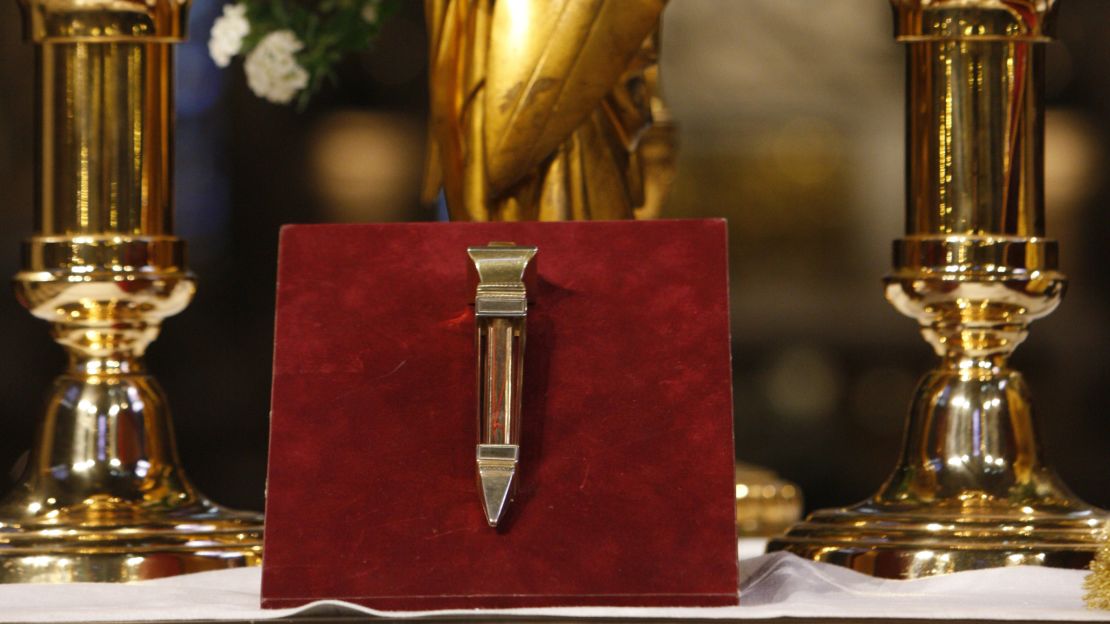
• There were also numerous sculptures, statues and paintings inside the cathedral depicting Biblical scenes and saints. A series of paintings, each nearly four meters tall and originally numbering 76, commemorates the New Testament’s Acts of the Apostles, including the crucifixion of St. Peter and the conversion of St. Paul. The works were completed between 1630 and 1707 by the members or associates of the Royal Academy of Painting and Sculpture. Of about 50 that survive, 13 remained on display in the cathedral, according to its website.
Another painting is from a series by Jean Jouvenet depicting the life of the Virgin Mary. All six were moved to the Louvre in the 1860s, and only “The Visitation” was returned to Notre Dame.
• It is not yet clear how much damage there is to the cathedral’s exterior, where a menagerie of menacing gargoyles and chimeras stand guard and a system of flying buttresses support the outside walls.
A Paris police source told CNN that part of the vault has collapsed in the central nave, and architects are checking whether the structure is stable.
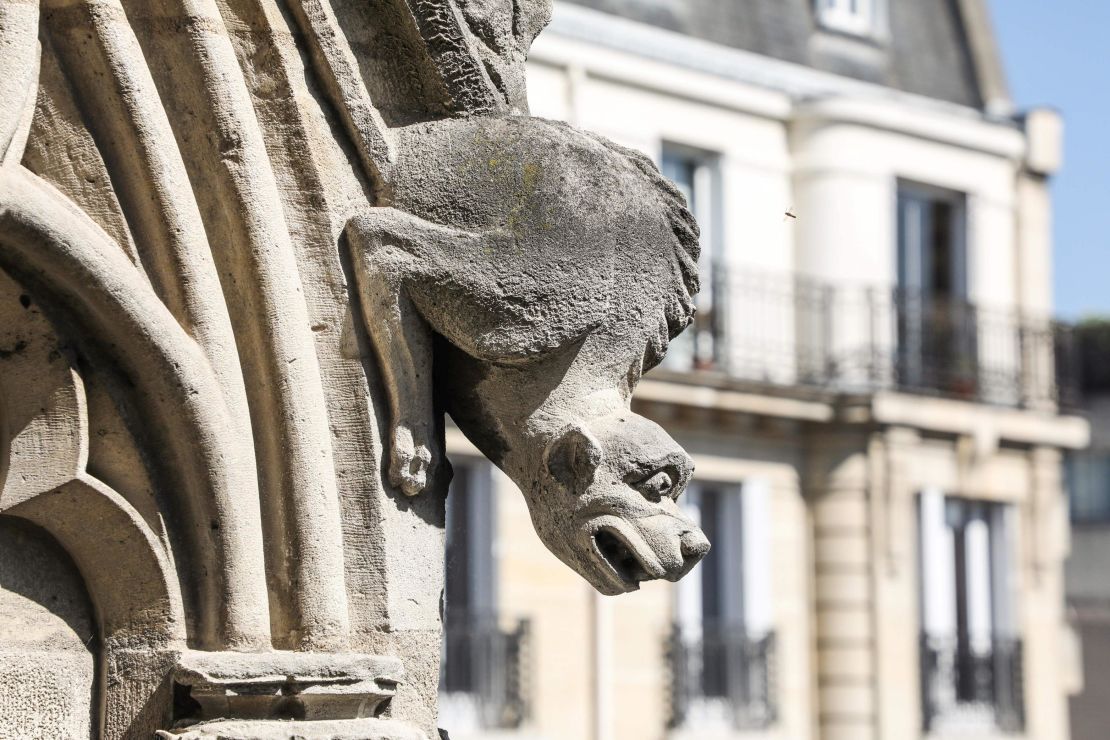
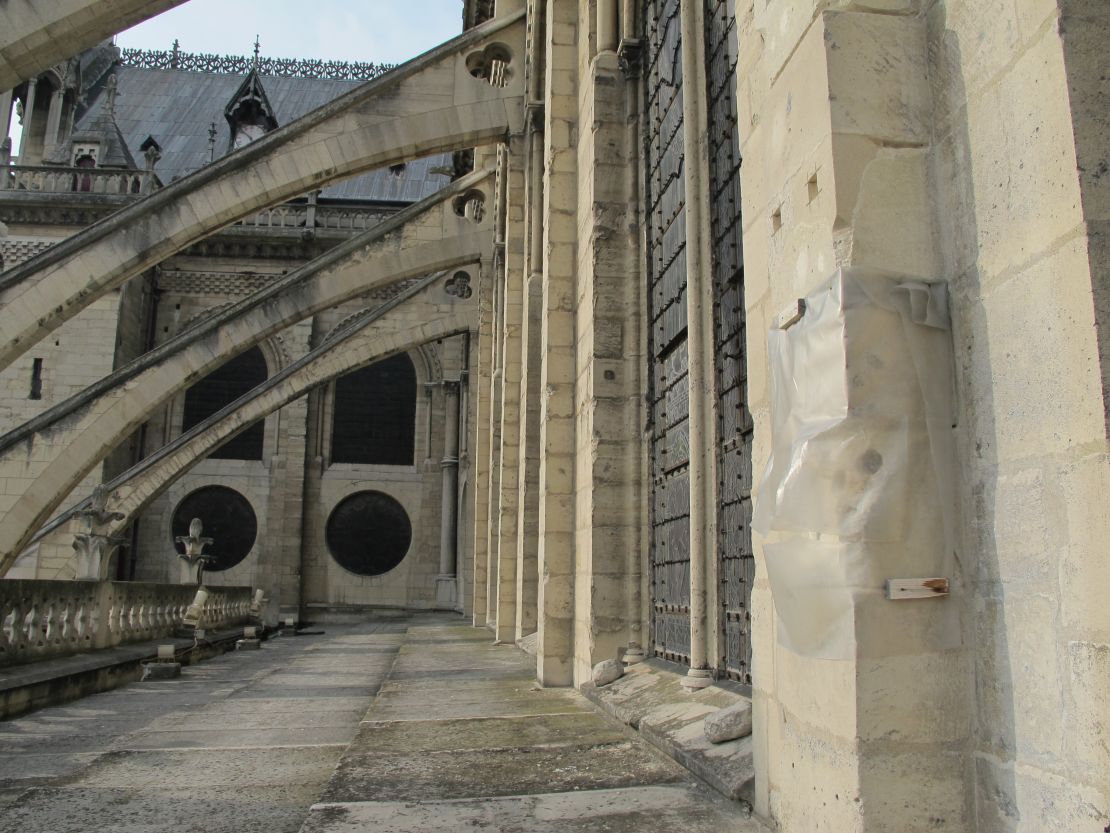
• The cathedral also has an archaeological crypt under the courtyard. It was created to protect 19th-century relics that were discovered during excavations in 1965. It opened to the public in 1980.
This story was updated to clarify that of the original 76 depictions of the Acts of the Apostles, only 13 remained on display in the cathedral.

















